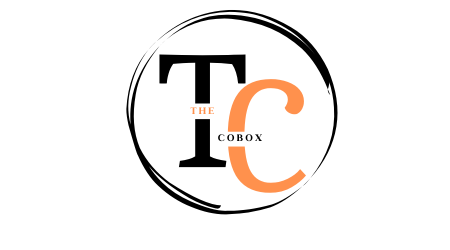Performance management practices have evolved significantly, with businesses constantly seeking innovative ways to identify and retain top talent. One such groundbreaking practice that has gained attention is the Keeper Standard Test. Originating from Netflix’s company culture, the Keeper Standard Test raises the bar for performance evaluations and talent management. Its central principle revolves around one critical question managers must ask themselves: “Would you fight to keep this employee on your team?” This question encapsulates the test’s purpose—ensuring that only essential and high-performing individuals are retained.
This blog will explore the foundation of the Keeper Standard Test, its methodology, benefits, and how organizations can implement it. We’ll also highlight real-world examples to showcase its impact and answer some frequently asked questions.
What is the Keeper Standard Test?
The Keeper Standard Test is a performance evaluation method introduced and popularized by Netflix. It’s designed to help businesses assess whether an employee provides genuine value to the organization. Rather than relying on traditional appraisal methods, this test is straightforward yet exceedingly effective.
Managers ask themselves one critical question about each team member:
“Would I fight to keep this employee if they were considering leaving?”
If the answer is “no,” it signals that the employee may not meet the expected standards of performance and impact.
This method redefines how organizations approach talent retention, underscoring the importance of maintaining teams of high-caliber individuals. It simultaneously balances transparency, honesty, and accountability within an organization’s culture.
Key Elements of the Keeper Standard Test
The Keeper Standard Test introduces structured elements that foster continuous organizational growth while keeping performance expectations clear.
Focus on High Performers
The test prioritizes employees who consistently deliver outstanding results and exhibit exceptional skills. It encourages managers to actively identify and reward their star performers rather than adopting a “one-size-fits-all” approach. This focus ensures that businesses retain individuals who drive results and sustain momentum.
Prompt Action on Underperformance
A critical component of the test is recognizing and addressing underperformers. If a manager wouldn’t “fight” to retain an employee, decisive steps are taken, such as providing constructive feedback, coaching, or even transitioning the individual out of the organization. This eliminates complacency and opens doors for talented hires who can add more value.
Transparency and Feedback
Honesty is fundamental to a successful application of the Keeper Standard Test. It requires open conversations between managers and employees, offering clear feedback on areas for improvement. Employees are given timely insights into their performance, enabling them to realign with company expectations or explore alternate opportunities.
Implementing the Keeper Test
Introducing the Keeper Standard Test within an organization requires both planning and cultural alignment. Below are steps to effectively implement it:
Educate Stakeholders
Start by educating leadership and managers about the purpose and benefits of the Keeper Standard Test. Hold training sessions to ensure they understand how to apply the test consistently and fairly.
Integrate with Existing Processes
The test doesn’t need to replace existing performance evaluations. Instead, integrate it as a complementary tool. For instance, it can be used during annual reviews or one-on-one meetings to identify high performers and address areas of concern.
Prioritize Communication
Transparent communication is key to success. Managers should have honest and empathetic conversations with their team members, providing feedback that aligns with the Keeper Standard Test philosophy. Ensure employees understand how their contributions are evaluated.
Overcome Challenges
Introducing any performance evaluation method can lead to resistance. To mitigate this challenge:
- Create clear criteria for evaluating employees.
- Highlight examples of how the Keeper Standard Test has improved performance in other organizations.
- Provide support systems for employees seeking improvement.
Benefits of the Keeper Standard Test
Adopting the Keeper Standard Test delivers notable advantages for both employees and organizations.
Improved Overall Performance
By setting high standards, the Keeper Test motivates employees to consistently perform at their best. Teams are composed of dedicated individuals, leading to better efficiency and productivity.
Reduced Workforce Complacency
The constant focus on performance encourages employees to steer clear of complacency. This creates a dynamic workplace culture where development and achievement are prioritized.
Enhanced Team Dynamics
The test fosters cohesive teams by retaining only the most impactful members. It enables managers to allocate resources optimally, ensuring that teams remain agile and capable of meeting challenges head-on.
Case Studies
Netflix
Netflix, the pioneer of the Keeper Standard Test, has attributed much of its success to this method. By diligently applying the test, Netflix retained high performers who contributed to its innovative content strategies and global expansion. Their transparency and commitment to fostering top talent have reinforced their status as an industry leader.
Tech Company Case Study
A leading tech company implemented the Keeper Standard Test when struggling with engagement issues among its workforce. After identifying and addressing underperforming employees, the company saw a measurable improvement in team productivity and overall morale within six months.
Startup Success Story
A rapidly growing startup adopted the test during its scaling phase. It enabled the startup to attract and retain skilled individuals while ensuring underperforming employees were provided with constructive guidance or transitioned out. This strategic move helped the startup achieve a 30% year-on-year growth rate.
YOU MAY ALSO LIKE
nice1010.fun com Review: A Social Media Experience Like Never Before
Conclusion
The implementation of structured evaluation methods, such as the described performance tests, has proven to be a pivotal tool for organizations aiming to optimize their workforce. By fostering a culture of accountability and continuous improvement, companies can identify top talent, support employee growth, and make informed decisions that directly contribute to their success. Whether for established corporations or emerging startups, these strategies underscore the importance of balancing employee development with organizational goals, ultimately driving sustained growth and success.
Frequently Asked Questions
1. Does the Keeper Standard Test only focus on high performers?
The test emphasizes the importance of identifying and retaining high-performing employees. However, it also encourages honest feedback and growth opportunities for employees who need improvement. It’s about building the best possible team while promoting transparency.
2. How can small businesses apply the Keeper Test?
Small businesses can prioritize using the Keeper Test during key growth phases. Incorporate it into quarterly reviews or informal check-ins with team members to maintain a continuous focus on employee impact and value.
3. Is the Keeper Test suitable for all industries?
Yes, the Keeper Test can be adapted to various industries. It’s particularly effective in performance-driven fields like tech, media, and professional services but can work in any environment focused on growth and continuous improvement.
4. What happens if an employee doesn’t pass the Keeper Test?
If employees don’t “pass” the test, managers should engage them in honest discussions. Provide actionable feedback and resources for improvement. If no progress is made, transitioning their role might be necessary to maintain team standards.
5. How does the Keeper Test improve workplace culture?
The test celebrates top talent and encourages transparency. Employees feel valued when they know their contributions are recognized, fostering a culture of excellence and accountability.











